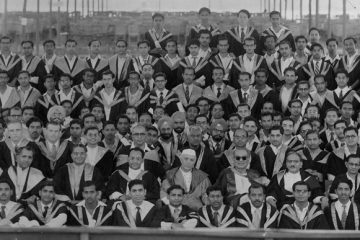A recent study has investigated the effect of nanofillers on air impermeability properties of Brominated isobutylene-isoprene rubber (BIIR)/ Epoxidized natural rubber (ENR) blend for automotive applications.
A team of researchers led by Prof Kinsuk Naskar from Rubber Technology Centre at IIT Kharagpur along with his student, Ms. Aswathy T R and the collaborator, Mr. Sujith Nair, the vice president of R&D, CEAT Tyre Limited have developed rubber nanocomposites by blending BIIR with ENR 25 and ENR 50 (25% and 50% epoxidation) at the optimized weight proportion, and thereafter different levels of carbon black have been replaced by graphene nanoparticles (GNP). Melt mixing method has been adopted to prepare the composites. The paper has been published by Willey, a publishing company (DOI: 10.1002/pat.4958).
Researchers have studied the morphology and the properties of nanocomposites in details. The rubber composites are hereby developed possess very high air permeability along with other physical properties required for barrier applications such as tyre inner-liners and rubber bottle stoppers. The barrier properties of BIIR-ENR 50 composites without GNP show a 30% improvement in air impermeability compared to BIIR-ENR 25 composites. Further, the BIIR-ENR 50 composites reinforced with GNP shows a further 20% improvement from the reference composite.
“This is due to the synergistic interaction between the graphene and carbon black in the BIIR-ENR 50 composites. The interaction between the graphene and BIIR-ENR 50 blends arises due to the hydrogen bonds formed between graphene and epoxy units, and the interaction between the GNP and Epoxy groups in BIIR-ENR 50 composites was confirmed by Bound Rubber Content (BRC) and Fourier-transform infrared (FTIR) spectroscopy. The formation of microstructures in the BIIR-ENR 50 composites has been affirmed by Transmission electron microscopy (TEM)”, mentioned Prof Kinsuk Naskar.
The inner liner of a tubeless tire is recommended to have excellent air impermeability for longer life and reduced rolling resistance.7 To achieve this, the inner liner of the tire should have made up of materials with excellent gas barrier properties. A blend of halogenated butyl rubber with natural rubber is already used for preparing inner-liners of tubeless tires. Rubbers like ENR got comparable air impermeability with halogenated butyl rubber. Blending of halogenated butyl rubber with ENR may enhance the physical properties of the composites without affecting the permeability of butyl rubber. ENR is already used as a compatibilizer for improving the dispersion of nanofillers in non-polar rubbers. Epoxidation of natural rubber also improves damping, adhesion, and oil resistance of natural rubber. Hence, it is a suitable material for making inner liners for the tire. In addition to that, chemical interactions between GNP and ENR, is expected to give a better dispersion of GNP in BIIR-ENR rubber blends.
“The mechanical and thermal properties of BIIR-ENR 25 and BIIR-ENR 50 composites show a positive change on the addition of GNP. Dynamic mechanical properties and ageing resistance of BIIR-ENR 50 composites have been improved by adding a small amount of GNP into it”, said Ms. Aswathy T R. “The modifications from the usual formulation pursued for the barrier applications of rubber composites, will enhance the overall performance properties as well as reduce the cost of the product developed. The long life of the developed composites will further improve the sustainability of the product”.
Nanocomposites opened the way for altering regular filled polymers or blends of polymers, particularly in transportation and structural applications. Nanocomposites with GNP show excellent strength, modulus, and high air barrier properties because of having a high specific surface area. GNPs are capable of producing a tortuous pathway in rubber composites. At present, carbon black (general-purpose furnace black) reinforced halogenated butyl rubber (BIIR or chlorobutyl rubber) is employed for the construction of inner liners. High air impermeability properties make halogenated butyl rubber a favored rubber for building inner liners. Brominated isobutylene-isoprene rubber (BIIR) has been chosen for the present work, considering its excellent weather and age resistance in addition to its air impermeability properties.
(Inputs from Rituparna Chakraborty, Branding Executive)
Media Contact: Prof Kinsuk Naskar, Professor, Email: knaskar@rtc.iitkgp.ac.in, Ph: +91-3222-281748
Contact: Paramita Dey, Junior Assistant
Email: media@iitkgp.ac.in, Ph. No.: +91-3222-282004



